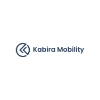Medical Product Design & Development
RELATED RECENT PLACEMENTS
Anupama Yeragudipati
Kabira Mobility
Gurunanak Khalsa College


Arun Kumar
Riverstone
Anna University

Paul Willington
DGS Technical Services Pvt. Ltd.
SAVEETHA SCHOOL OF ENGINEERING ,CHENNAI

IVIN TROY
Kabira Mobility
College of Engineering and Management,Punnapra

Karuthapandi K
DGS Technical Services Pvt. Ltd.
S. Veerasamy Chettiar college of engineering and technology

Gowsikraj M
Hyundai Motor India Ltd
Sri krishna college of technology


Mujahidoddin Saudagar
Hyundai Motor India Ltd
G.H Raisoni college of engineering and management Amravati


Krutika Ravikumar
Genpact
R.V.College of Engineering
Syllabus
This course is full of best-in-class content by leading faculty and industry experts in the form of videos and projects
Course Overview
Any product you use on a daily basis has gone through a rigorous design and development engineering process. Product design and development has a wide range of applications across many industries. As there’s never a shortage of new product ideas, the product design and development market is always on the lookout for engineers with a well-versed hands-on understanding of the product design and development process.
This Skill-Lync course will take learners through basic and advanced concepts in product design and development. In this course, learners will gain the following:
- Comprehensive overview of and practical skills sets used in product design and development.
- Understanding of product design, systems engineering-based design approach, industrial design, rapid prototyping, and intellectual property.
- Hands-on experience in using computer programs to create 3D models, rendering, and drawings throughout the product design process.
- Practical understanding of CAD software like SolidWorks to draw 2D/3D models, create features, engineering drawings, and generate realistic renderings.
- Knowledge on creating patent disclosure and patent drafting.
- Exposure to hands-on projects that require use of Solidworks to design and develop products.
Who can enrol in this course?
Engineering graduates and working professionals with a background in similar fields can take this course.
Course Syllabus
On a daily basis we talk to companies in the likes of Tata Elxsi and Mahindra to fine tune our curriculum.
Week 1 - Introduction to Product Design
The process of product development has a series of stages that detail everything from the time the concept is conceived, to the time it is launched in the market. Engineers striving to work in the industry must have an established understanding of the product design and development stages, as well as how to develop a successful product.
This week will cover
- Fundamentals of product design
- Overview of each design process and development stage
- Products that have demonstrated social impact and economic success
- Reasons behind success of products
Week 2 - Integrated Product Development
When developing a product, many engineering teams from different disciplines come together to provide their inputs on the project. The framework which facilitates this process is known as integrated product development. This is central to most product development projects, making it imperative for learners to understand the methodology.
This week will cover
- What Integrated Product Development (IPD) methodology is
- How design, market, and production are integrated in the process
- Different phases of product design (with complexity and maturity)
Week 3 - Product Idealization and Planning
Before a product is manufactured and actualized, engineers must carefully plan its development to meet customer demands. This helps engineers decide the features it should be developed with. It is important for learners to know the logistics involved in planning the development of a product.
This week will cover
- Methods for screening and identifying new product
- How to choose the most compelling concept
- Identifying customer needs
- Key processes in the concept generation phase
- How to plan for product development
Week 4 - Systems-Based Design Approach
A system-based design approach encompassess the development of individual components, architecture, and associated elements in a product. It also focuses on interfaces for that system in order to meet market and consumer requirements. This is a vital approach that learners must understand as it is widely required in the industry.
This week will cover
- Key aspects of systems engineering-based design approach
- Defining operational concepts, requirements for subsystems
- Verification and validation of software and hardware components
- Systems integration
Week 5 - Product Architecture
Product architecture details how the different parts of a product interface and interact with each other. This requires a schematic presentation to demonstrate the different elements involved. Learners must know about how each part in a product is designed and interfaced to develop the overall model.
This week will cover
- Schematics of a product
- Various functions and features
- How each element influences final products
- How function and form or products are integrated
- Cost analysis of product development
- Fundamentals of product architecture (modular and integral types)
Week 6 - Industrial Design Fundamentals
Industrial design is the methodology concerned with developing products that are used by individuals on a daily basis, and therefore require mass production. As engineers working in the industry deal with industrial design on a daily basis, it is important to understand how a product can be developed successfully to meet market demands.
This week will cover
- Key elements of successful industrial design
- Role of industrial designers
- Addressing key design challenges faced in
- Human interface
- Aesthetics
- Physical ergonomics
- Form and size
- Social normal
- Combination of functionality and art
Week 7 - Computer Aided Design
Engineers work with computer aided design (CAD) tools to design and develop 2D and 3D models of their products. This is a hands on tool that engineers working on products must be well-versed in.
This week will cover
- Use of CAD to create 3D models
- Use of CAD to draft engineering drawings
- Use of CAD to perform finite element analysis in multi-physics domains.
- Basics of popular software used in the industry
Week 8 - Design for Reliability, Availability , Maintainability, and Safety
During the design process, products are developed to be reliable, available, and maintainable. They are put through a series of tests to ensure they are suitable for consumer use, and ensure design excellence. Engineers must have a strong hold on how to incorporate these considerations during the design process to ensure development of a successful product.
This week will cover
- Importance of design of reliability, availability, and maintainability for product design
- Failure mode effect analysis (FMEA) methodology to identify product risks
- How to mitigate risks in the design and development stage
- Different types of FMEAs
Week 9 - Reverse Engineering
Reverse engineering is when a product is dismantled into its individual parts to understand its working. This provides insight on how the product works. Reverse engineering is commonly applied in the industry, making it a core methodology for engineers to understand.
This week will cover
- Reverse engineering
- Procedures followed in reverse engineering (mechanical reverse engineering)
- Common 3D scanning techniques and the differences between them
- Basics of reverse engineering software
Week 10 - Design for Manufacture and Assembly
To ensure a product is viable in the market, it must undergo the process of design for manufacturability. This ensures that the design of individual parts in a product, and the product as a whole can be manufactured with ease so that it is feasible to produce cost efficiently and in quantities required by the market. Learners must understand the principles and procedures followed to ensure a product is designed for manufacturability.
This week will cover
- Principles of design for manufacture and assembly (DFMA)
- Fundamental methodology for DFMA
- Manufacturing readiness levels (MRL)
- Evaluate manufacturing maturity for each stage
- Real-world examples of design modifications that improve manufacturing and assembly
Week 11 - Design for Environment and Sustainability
Environmentally friendly products provide sustainable means of living. In fact, eco-friendly products are a growing trend in the industry as a focus on recycling increases. Understanding the design considerations to develop eco-friendly products is a vital skill for engineers.
This week will cover
- Industrial trends of conscious product design (with focus on environmental safety and sustainability)
- Material sourcing
- Process control and management
- Product recycling stages and their impact on the environment
Week 12 - Product Prototyping
Before a product is launched on the market, a prototype can be developed to identify any limitations or modifications that need to be worked on. Once these modifications are made the product can be launched on a larger scale. Learners must understand the ins and outs of developing a product prototype using different methods followed in the industry.
This week will cover
- Industrial leading prototype method
- 3D printing
- Additive manufacturing for design iterations
- Advantages of each prototyping method
- Methods of testing and validation
Week 13 - Project Management
Product design and development requires an understanding of project management to oversee all dimensions of the process. This ensures that the product is successfully delivered to consumers. Learners must understand how project management breaks down the different aspects of product development.
This week will cover
- Project management in product design
- Product breakdown structure
- Project schedule
- Project budget
- Risk registers
- Project execution
- Performance evaluation and feedback
Week 14 - Patents and Intellectual Property
Products must have a patent on them to ensure that other manufacturers do not replicate the design and sell it commercially. Patents offer rights on property for a development. It is important to know about the rights, and the process followed for putting a patent on a product.
This week will cover
- Patent and intellectual property (IP)
- Types of IP and their use cases
- Formulate filing strategy
- Prior art investigation
- Claim drafting
- Claim refinements
- Application procedure
- Internationally protected patents
Week 15 - Trends in Product Development
As the world progresses, new products are developed on a daily basis to meet advancements. Products must keep up with rapidly changing real-world requirements. Being up to date with modern trends in product design is important for budding engineers.
This week will cover
- Trends and popular methods used in the product development process
- Real-world applications of the methods
- Industrial best practices for future product design
Our courses have been designed by industry experts to help students achieve their dream careers
Industry Projects
Our projects are designed by experts in the industry to reflect industry standards. By working through our projects, Learners will gain a practical understanding of what they will take on at a larger-scale in the industry. In total, there are 6 Projects that are available in this program.
Designing Competitive LED Desktop Lamp
Learners will have to design a competitive LED desktop lamp product for the mass market. Using system engineering design knowledge, learners need to break down LED desktop lamp design into subsystems and create plans to validate each subsystem and whole system.
Designing an Electric Scooter
Learners are required to use SolidWorks (or equivalent CAD program) to create a 3D model of an electric scooter used for short-distance commute. In this project, learners will have to:
- Generate related drawings
- Investigate design features that improve reliability, availability, maintainability, and safety
- Perform FMEA studies on the product
- Refine design for better manufacturability and to be eco friendly
Designing a Headphone
Learners are to design a headphone for everyday consumer. The CAD model should be created to demonstrate design features and details. Learners are to create a master product development plan detailing design, manufacturing, schedule, and more. They are also to create product architecture, systems, subsystems, software/hardware requirements, and interface documents.
Design and Development of Crutch
For this project, you have to design a compelling crutch for the mass market using the knowledge and tools you have learned.
Design and Development of Pulse Oximeter
In this project, your task is to design a pulse oximeter and write a multi-page report on the design process you followed.
Design and Development of Disposable Syringe
The goal of this project is to combine all the important aspects of integrated product design and development and work on a complete design cycle of the product from concept to production. The product selected for this project is a Disposable syringe.
Our courses have been designed by industry experts to help students achieve their dream careers
Ratings & Reviews by Learners
Skill-Lync has received honest feedback from our learners around the globe.

Flexible Pricing
Talk to our career counsellors to get flexible payment options.
INR 40,000
Inclusive of all charges
Become job ready with our comprehensive industry focused curriculum for freshers & early career professionals
1 Year Accessto Skill-Lync’s Learning Management System (LMS)
Personalized Pageto showcase Projects & Certifications
Live Individual & Group Sessionsto resolve queries, Discuss Progress and Study Plans.
Personalized & Hands-OnSupport over Mail, Telephone for Query Resolution & Overall Learner Progress.
Job-Oriented Industry Relevant Curriculumavailable at your fingertips curated by Global Industry Experts along with Live Sessions.
Instructors profiles
Our courses are designed by leading academicians and experienced industry professionals.

1 industry expert
Our instructors are industry experts along with a passion to teach.

9 years in the experience range
Instructors with 9 years extensive industry experience.

Areas of expertise
- Electrical automotive engineering
- EV-BMS
- Electrical Machines
Similar Courses
Got more questions?
Talk to our Team Directly
Please fill in your number & an expert from our team will call you shortly.
